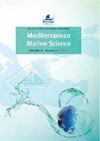侵入性虫黄藻(Oculina patagonica)对船体的污染——航运是否会促进其独特的大规模传播?
IF 2.3
3区 环境科学与生态学
Q1 MARINE & FRESHWATER BIOLOGY
引用次数: 1
摘要
虫黄珊瑚Oculina patagonica(硬核珊瑚,Oculinidae)是一种入侵物种,1966年首次在地中海记录,目前已扩大其在大西洋西部和东部的分布。在这里,我们回顾了来自多个数据库的数据,以汇编巴塔哥尼亚的历史分布记录并分析其传播。按时间顺序排列的综述强调了这种虫黄珊瑚在过去二十年中的独特传播,在多个方向上扩大了其分布,并在相隔约12000公里的间断区域建立了种群,包括温带地中海、亚热带东大西洋和热带墨西哥湾的大多数生物地理区域。巴塔哥尼亚O.patagonica记录的生物地理分布不连续性很难单独用幼虫的分散来解释;因此,其他机制可能有助于其大规模传播模式。这项研究首次观察到,在地中海西部(37°N,1°W),几个巴塔哥尼亚O.patagonica殖民地污染了一艘休闲船的船体和金属缝隙。在一艘船上出现几个成熟的巴塔哥尼亚珊瑚群落,而不是在天然或人工漂浮基质上漂流一个珊瑚群落,这可能会大大增加其传播的潜力,再加上其适应漂流的生态和生物特征。我们假设珊瑚种群通过船运的旅行可能是一种传播媒介,有助于解释这种入侵物种经历的远距离传播事件和二次引入。巴塔哥尼亚O.patagonica的广泛传播能够推动从大型藻类优势向珊瑚优势的阶段转变,这与当前全球变化下珊瑚介导的高纬度浅层岩礁热带化的持续过程一致本文章由计算机程序翻译,如有差异,请以英文原文为准。
Fouling of a boat hull by the invasive zooxanthellate coral Oculina patagonica - could shipping be enhancing its unique large-scale spread?
The zooxanthellate coral Oculina patagonica (Scleractinia, Oculinidae) is an invasive species that was first recorded in the Mediterranean Sea in 1966 and currently has expanded its distribution across both the western and eastern Atlantic. Here, we reviewed data from multiple databases to compile historical distribution records of O. patagonica and analyze its spread. The chronological review highlights the unique spread of this zooxanthellate coral during the last two decades, expanding its distribution in multiple directions and establishing populations in disjunct regions separated by ~12,000 km, including most biogeographic regions within the temperate Mediterranean, the subtropical eastern Atlantic and the tropical Gulf of Mexico. The biogeographic distribution discontinuities documented in O. patagonica are difficult to explain by larval dispersion alone; therefore, other mechanisms may contribute to its large-scale spread pattern. This study provides the first observation of several O. patagonica colonies fouling the hull and metal crevices of a recreational boat in the western Mediterranean (37°N, 1°W). The presence of several mature O. patagonica colonies on a single ship, rather than a single coral colony rafting on natural or artificial floating substrates, could greatly increase its potential for spread, coupled with its ecological and biological traits adapted to rafting. We hypothesized that the travel of coral populations by shipping may act as a dispersal vector contributing to explaining the long-distance dispersal events and secondary introductions experienced by this invasive species. The broad spread of O. patagonica, which is able to drive phase shifts from macroalgae dominance to coral dominance, is consistent with the ongoing process of coral-mediated tropicalization of high-latitude shallow rocky reefs under current global change
求助全文
通过发布文献求助,成功后即可免费获取论文全文。
去求助
来源期刊

Mediterranean Marine Science
MARINE & FRESHWATER BIOLOGY-
CiteScore
5.20
自引率
17.90%
发文量
34
审稿时长
>12 weeks
期刊介绍:
The journal Mediterranean Marine Science (MMS), published by the Hellenic Centre for Marine Research (HCMR), issues three volumes annually. The journal welcomes original research articles, short communications, New Mediterranean Biodiversity records, extended reviews, comments, and Theme sections in all fields of Oceanography, Marine Biology, Marine Conservation, Fisheries and Aquaculture in the Mediterranean area and the adjacent regions. All content is peer reviewed.
 求助内容:
求助内容: 应助结果提醒方式:
应助结果提醒方式:


